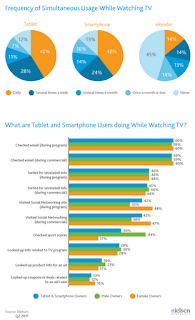"A surge in FMCG advertising and a triple-digit increase in online video helped fuel a 13.5% like for like growth in UK internet advertising expenditure, and a half-year 2011 high of £2.26 billion.
The wider UK advertising sector experienced year on year growth of just 1.4% to £8.27 billion between January and June 2011. Internet spend has surpassed forecasts to reach a new market share of 27%, with a quarter of a billion pounds more spent on internet advertising in the first half of 2011 compared to the same period in 2010.
The figures, which exclude mobile advertising expenditure, are collated bi-annually by the Internet Advertising Bureau (IAB), the trade body for digital advertising, in conjunction with PwC and WARC.
Display accounts for nearly a quarter of spend as search and classified still grow
Boosted by sophisticated new formats and 100% growth of online video, display advertising grew by 18.5% year on year on a like for like basis to £510 million, representing a 23% share of online spend in the first half of 2011 (£440 million and 22% share in H1 2010). A combination of direct response and an increased number of social media and brand campaigns delivered this growth.
Although banners and embedded formats still dominate online display (£374 million or 73% share), video doubled in size year on year to £45 million, giving it a 9% share of online display (5% in first half of 2010). This is due to a significant increase in advertisers using video to deliver brand messages.
Paid-for search marketing continued to thrive as advertisers recognise its transparent and measurable benefits during these budget-pressured times. Year on year, search increased 12.6% on a like for like basis to £1,313 million, representing a share of 58% of online advertising (£1,164 million and 58% share in 2010).
Online classifieds grew 3% like for like to £385 million with a share of 17% of online advertising year on year (£379 million and a 19% share in the first half of 2010).
Lead generation, an increasingly important form of performance-based marketing where advertisers pay per sales lead rather than a click through or by an advertisement served, grew by 20% to £26 million (£22 million in H1 2010).
While finance took over from the entertainment sector as the top category spender in display for the first half of 2011, the biggest winner was FMCG, which has grown by six percentage points in two and a half years. Improved measurement tools fuelled this growth, as FMCG marketers learnt that online delivers brand messages and works well as part of a cross-media campaign.
The top display five categories between January and June 2011 were: finance (16%), FMCG (15%), entertainment & media (12%), travel & transport (10%), retail (10%)."
Source: Press release from the
IAB UK, 5th October 2011









